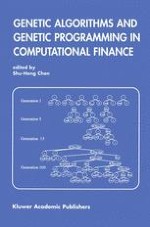2002 | Buch
Über dieses Buch
After a decade of development, genetic algorithms and genetic programming have become a widely accepted toolkit for computational finance. Genetic Algorithms and Genetic Programming in Computational Finance is a pioneering volume devoted entirely to a systematic and comprehensive review of this subject. Chapters cover various areas of computational finance, including financial forecasting, trading strategies development, cash flow management, option pricing, portfolio management, volatility modeling, arbitraging, and agent-based simulations of artificial stock markets. Two tutorial chapters are also included to help readers quickly grasp the essence of these tools. Finally, a menu-driven software program, Simple GP, accompanies the volume, which will enable readers without a strong programming background to gain hands-on experience in dealing with much of the technical material introduced in this work.
Anzeige
